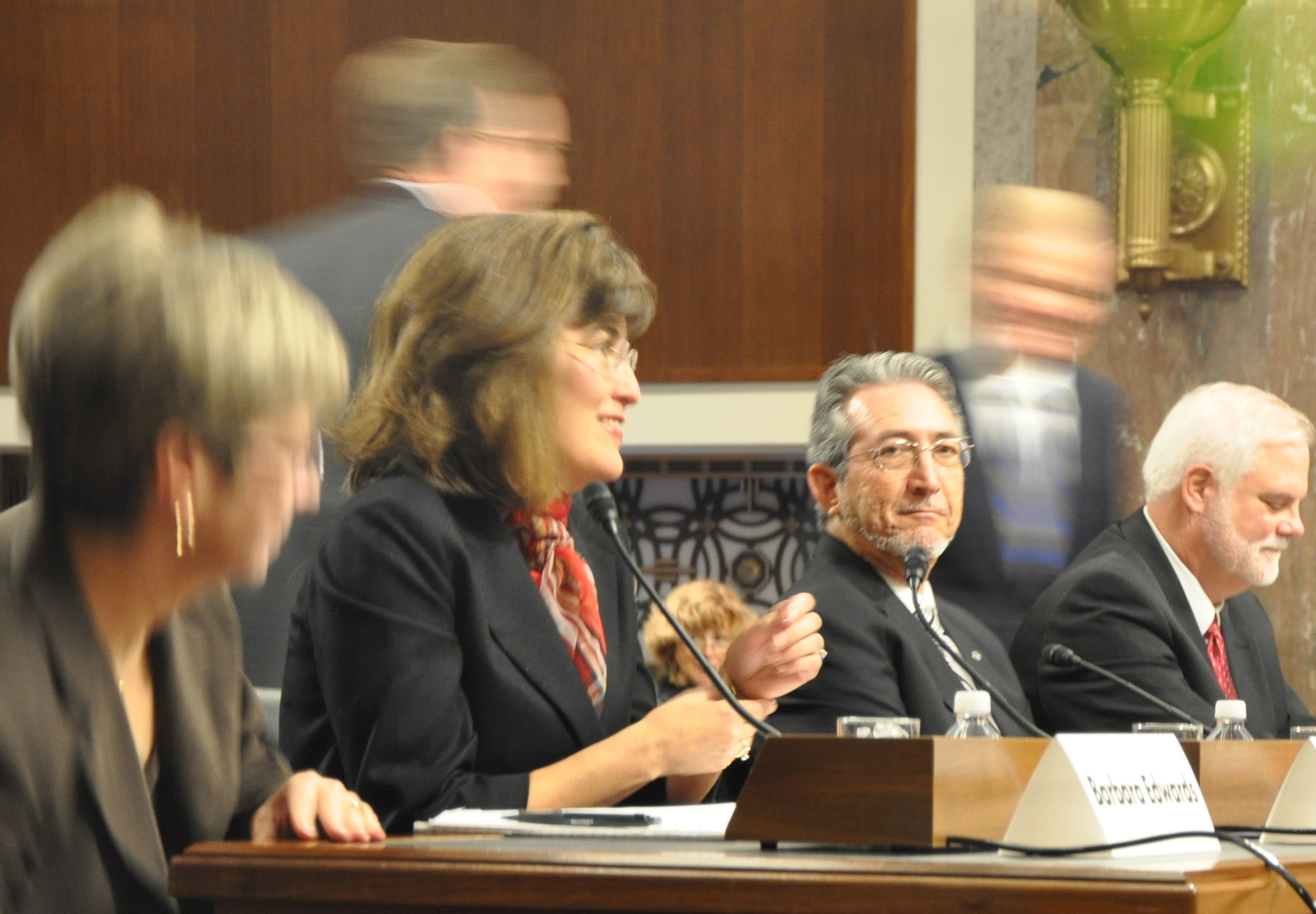WASHINGTON – Baby boomers are officially reaching retirement age this year. The 2010 Census indicates that Iowa has the sixth highest concentration of seniors older than 65, behind the top three states Florida, West Virginia and Maine.

Is anyone listening? Alfredo Navas, center, testifies before a Senate committee on Nov. 2, 2011 about assisted living facilities and the neglect that led to his mother's death. (Chelsea Wallis / MNS)
“Today, about 1 million Americans make their home in assisted living,” said Sen. Bill Nelson, D – Fla., at a hearing before the Senate Special Committee on Aging, “including about 131,000 Medicaid recipients.”
But the loosely defined category of assisted living is leaving some seniors without a safety net. Now the Senate is asking if states are failing their elderly populations on a national scale, and whether it is time for the federal government to take over territory traditionally managed at the state level.
Alfredo Navas wants answers. He trusted the fence and the door alarm, the security camera and the staff member on duty to watch over his ailing mother. But that night the gate was open. The alarm wasn’t set properly. The camera was out of service, and the staff member had fallen asleep.
On a chilly morning in January 2008, Navas received the phone call that his mother, an Alzheimer’s patient, had wandered outside and drowned in the lake behind her assisted living facility in Miami, Fla.
Almost four years later, Navas is still frustrated by the questions that official investigations have failed to answer. Why was it so difficult to get copies of the police reports? Why was the facility allowed to continue operating after violations of neglect?
His sad story is one of hundreds uncovered by a Miami Herald investigation this year into the neglect and abuse of seniors the state system failed to protect.
“These stories, unfortunately,” Nelson said at the hearing, “are not limited to the state of Florida.”
Problems in Iowa
Assisted living facilities are loosely defined and vary between states. Generally, they offer seniors more autonomy than nursing homes and are often paid for with private funds rather than Medicare or Medicaid.
In Iowa, the facilities fall under the Department of Inspections and Appeals for certifying—or licensing the program—and taking and tracking medical complaints. Other issues can be taken up with the Long-Term Care Ombudsman who advocates on behalf of residents. The two departments work together closely to tackle system-wide issues, said Iowa Ombudsman Jeanne Yordi.
Between February 2008 and September 2009, the Dubuque Retirement Community was fined eight times for violations. In August 2009, a state report revealed 17 instances of incorrectly reported medication doses or treatments over a nine-day period.
In October 2009, the Dubuque facility became the first of five in Iowa operated by Assisted Living Concepts, Inc., which is based in Wisconsin and manages more than 200 facilities across the country, to be voluntarily decertified. The facility continues to operate as apartment living with home health services, but the state has little ability to act if residents have complaints.
A growth industry
Assisted living is the one senior living industry that continues to grow, said David Werning, a spokesman for Iowa’s Department of Inspections and Appeals.
Today, there are 306 certified assisted living facilities in Iowa, up from 177 in 2005.
It has been “a rapidly growing and expanding business in the state,” but growth is beginning to slow down, Werning said.
Because there are so many assisted living facilities, advocates are suggesting federal oversight. One of benefit of that could be tracking the money that Medicaid patients are spending.
“If they agree to accept money from Medicaid, assisted living facilities should be held as accountable as other health care providers at both the federal and state levels,” said Eric Carlson, a spokesman for NGO National Senior Citizens Law Center.
However, lobbyists and local officials alike more often speak in support of keeping regulation at the state level.
The Assisted Living Federation of America, a lobbying group on behalf of the facilities, says simply enforcing the existing law could have prevented the incidents of abuse in Florida, and more regulation would not have helped.
The National Center for Assisted Living, another lobbying group, believes regulation should remain at the state level because federally regulated models such as the one for nursing homes is difficult to update.
Iowa Department of Inspections and Appeals spokeswoman Ann Martin also supports keeping certification and regulation in the hands of the state.
The state has developed its model for assisted living since 1997, and the process works, she said. “Part of the drawback of federal regulation is that places like Florida don’t meet the model of the Iowa assisted living program.”
“There’s no uniformity over states,” Werning adds, “It’s hard to centralize the model definitions and structures.”
But no one wants to end up with facilities that resemble a less expensive, less regulated nursing home, said specialist Larry Polivka of Florida State University as he testified before the senators. “We need to keep an eye on that possibility and keep it from happening,” he said.
Senators were hesitant to endorse federal oversight. In the end, Nelson kicked the issue back to the states: “because of the abuses that have been uncovered, albeit in a small, small percentage of [assisted living facilities],” there must be “a better way at encouraging states to take regulatory control of this problem.”
As for Navas, the discussion didn’t go far enough. “I’m not overly optimistic,” he said. “No one here mentioned linking the prosecution and the law end of it with the oversight.”

